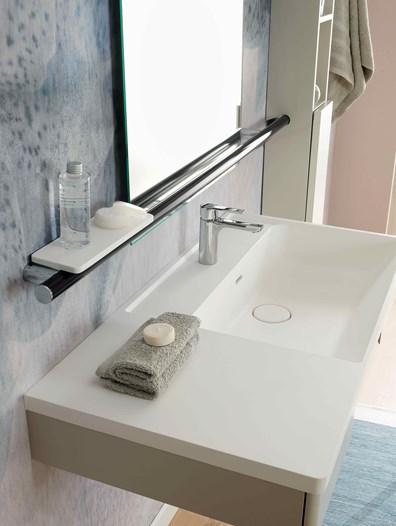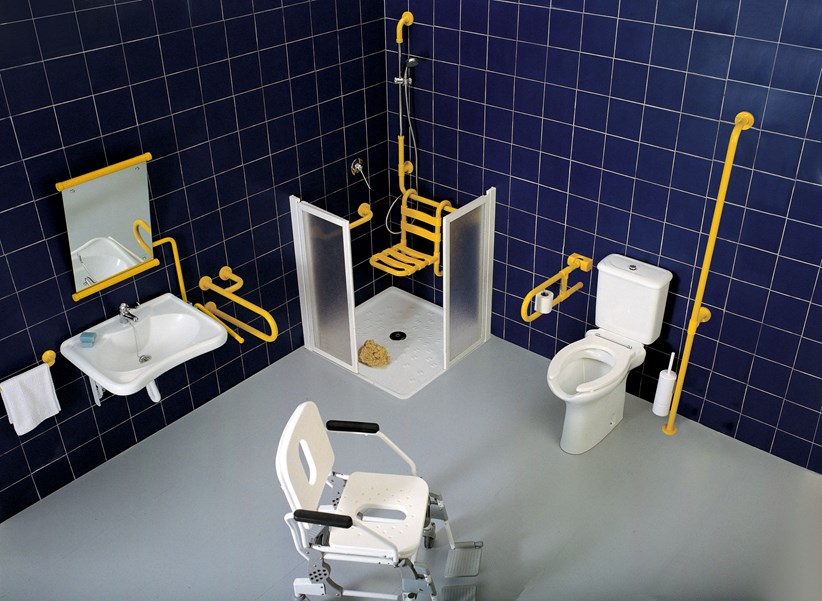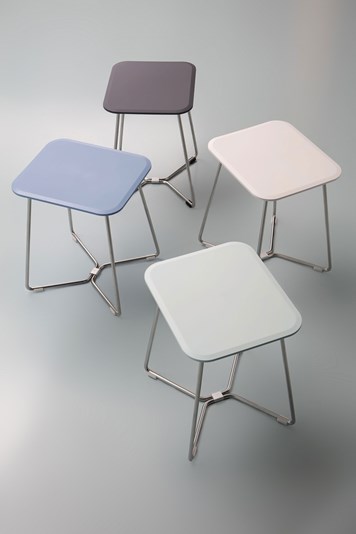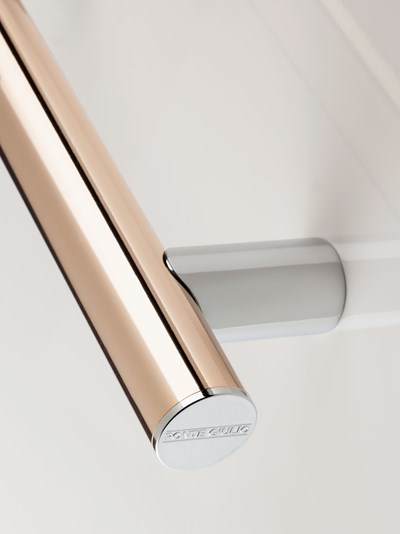5 stats revealing how AEC professionals make product decisions
See how architects and engineers find products and what information they trust. Use these insights to shape your 2026 marketing plan.
What does the spread of BIM (Building Information Modeling) imply for the construction industry, and what are the factors influencing its adoption in the building sector?
We discussed this with Stefano Monelli, Head of Communication, BIM Model Integration, and ETIM Classification at Ponte Giulio, one of Europe's leading manufacturers of bathroom safety products.

 Stefano Monelli - Detail of environment with products from the "HUG" collection
Stefano Monelli - Detail of environment with products from the "HUG" collection
We approached BIM modeling already in the second half of 2012, encouraged by our distributor for the Scandinavian area. The decision to have a library of BIM objects definitely rewarded us in terms of visibility, as at the time, very few companies used digital models of their products.
Today, the level of BIM adoption varies significantly from country to country, but we trust it will gradually establish itself internationally, thanks to the emergence of new professional roles with expertise in this field.
Each country adopts different government policies regarding the use of BIM in public building projects. Download the global guide to BIM mandates and initiatives to find out in which countries BIM is already mandatory and how mandates affect the work of manufacturers operating in the building sector.
This question certainly requires a detailed answer, as this new work methodology strongly impacts all phases of building design, from conception to final realization. Undoubtedly, companies offering BIM models of their products can gain a significant competitive advantage.
However, analyzing ongoing and still under-evaluation projects, I can state that BIM adoption is in some cases still limited to specific professions. The latest ASSOBIM report on the Italian market outlines a rather fragmented situation in the Architecture, Engineering, and Construction (AEC) industry: among professionals adopting BIM, 43% are architects and only 9% are engineers. Additionally, companies dealing with MEP (Mechanical, Electrical, Plumbing) and structural design still make little use of this working method.
I believe even these companies would gain significant benefits from using BIM. Think of the advantages offered by digitization in plant and civil works maintenance or structural load calculations.
Unfortunately, large-scale adoption of BIM requires, on one hand, a long-term vision by national governments and, on the other hand, awareness by construction industry professionals. In my opinion, the future of BIM depends on these two factors.
 Archive image of 'Tubocolor' product line
Archive image of 'Tubocolor' product line
BIMobject is the first and currently the only provider chosen by Ponte Giulio to develop, promote, and distribute the digital models of its products. Although over time we also analyzed and evaluated other alternatives, we believe that BIMobject represents an ideal partner for working in the BIM field at an international level.
From the model development perspective, collaboration with BIMobject proved to be simple and fruitful. Their always-positive, problem-solving approach allowed us to optimize the investment and choose the most suitable services to grow our business.
Furthermore, over the past few years, the evolution of the website and the implementation of Insights tools have allowed us to reach potential customers through more effective promotional campaigns.
We welcomed the platform's new tools with great interest. The Insights section provides a useful map of downloads and views by users in various countries. These and other statistical data offer an interesting overview of audience behavior and product trends. Thanks to these valuable insights, it's possible to take a more direct approach toward potential customers by planning targeted marketing actions.
The BIMobject platform offers a suite of tools designed to promote your company’s products and track in real time where and how they are being used by designers around the world. Discover all the services offered by BIMobject.
Undoubtedly, the transition from traditional building design and construction methods to digital methods represents a true revolution that has already strongly influenced the behavior of many AEC specialists.
Building Information Modeling represents the future because it requires a radical paradigm shift in how the involved professionals communicate and perform the different tasks needed to construct a building.
However, we must not forget that BIM adoption strongly impacts a sector involving various roles and professions with different cultural and educational backgrounds. This diversity has led many governments and industry associations to outline a plan for BIM application and use which, although ambitious in its intentions, is in practice rather conservative. The reasons for this “cautious” approach are essentially twofold: the need to teach professionals how to use this method and the costs involved in such an extensive training program.
The manufacturing sector must also carefully assess how and to what extent it intends to encourage the adoption and development of digital product models.

 Stools from the 'OMNIA' collection - Detail of handle from 'Prestigio plus' line
Stools from the 'OMNIA' collection - Detail of handle from 'Prestigio plus' line
My advice is to consider adopting this work method with the goal of improving collaboration between the various professionals involved in a project: architects, interior designers, engineers, and others. BIM design allows you to calculate in real-time costs, installation timelines, and maintenance methods, reducing errors, delays, and wasted money.
Moreover, relying on a partner like BIMobject makes it possible to obtain all the support needed to develop BIM objects, even without in-house expertise. The BIMobject platform also allows you to increase product visibility in the international market and plan marketing activities specific to your target audience.
The company, based in Orvieto (Italy), produces a wide range of bathroom furnishing solutions for commercial and residential buildings, hospitals, nursing homes, and hotels.
Ponte Giulio operates globally, offering products that ensure a safe and comfortable bathroom environment for all users - from children to the elderly, including people with disabilities. Their offerings, suitable for any style and furnishing need, are characterized by high aesthetic quality and attention to detail.
Among the brand’s most iconic offerings is the Tubocolor line of aids, characterized by an antimicrobial, non-slip surface that is soft and warm to the touch. These aids are made using modern, low-impact CNC manufacturing technologies.
See how architects and engineers find products and what information they trust. Use these insights to shape your 2026 marketing plan.
Learn how BIM influences product selection and what makes specifiers choose one brand over another. Insights from BIMobject’s expert interview.
For sanitary manufacturers, BIM objects offer a decisive advantage: they make products visible to architects early in the design process, strengthen brand credibility, and open a powerful marketing channel to reach decision-makers.